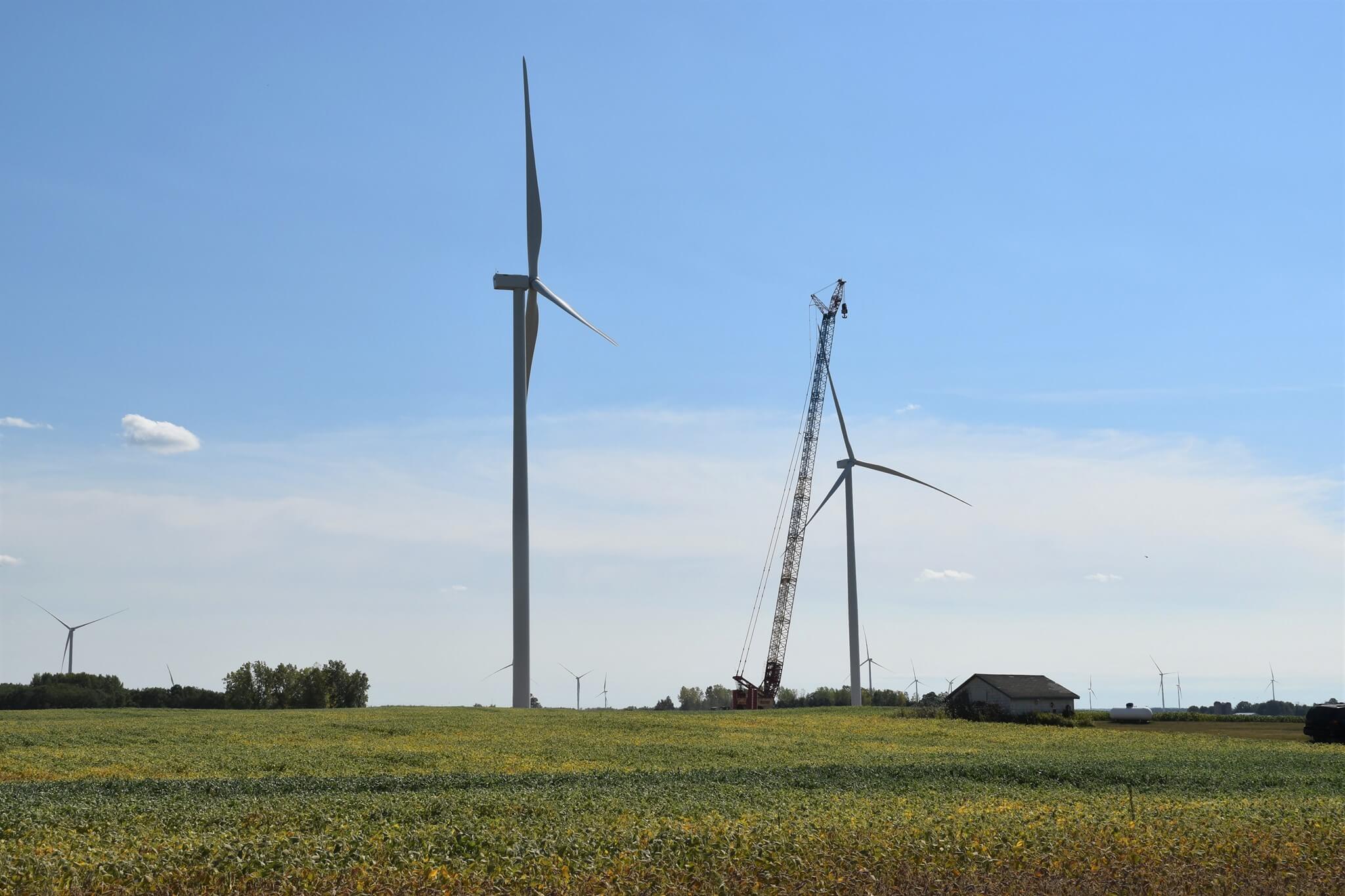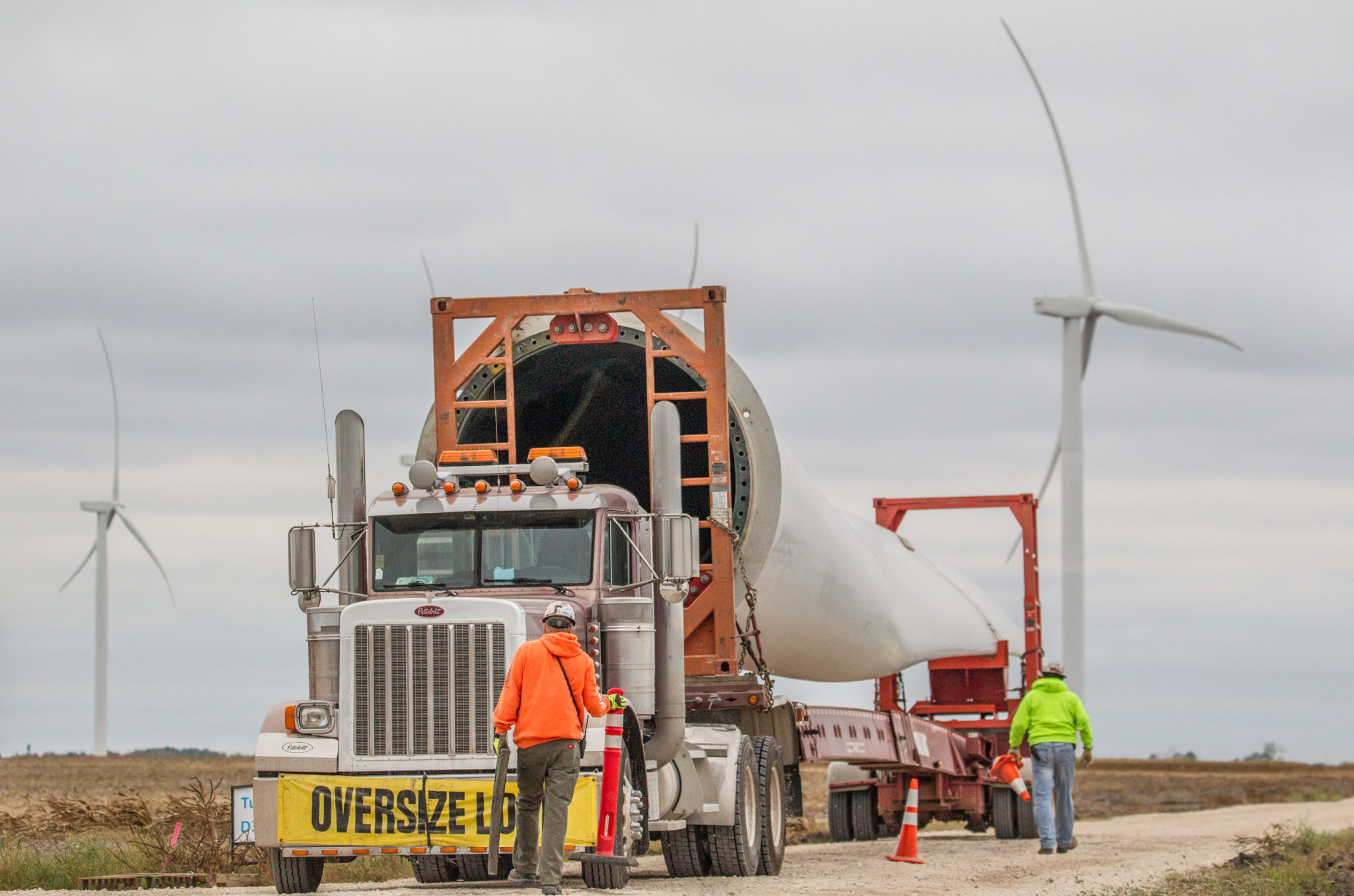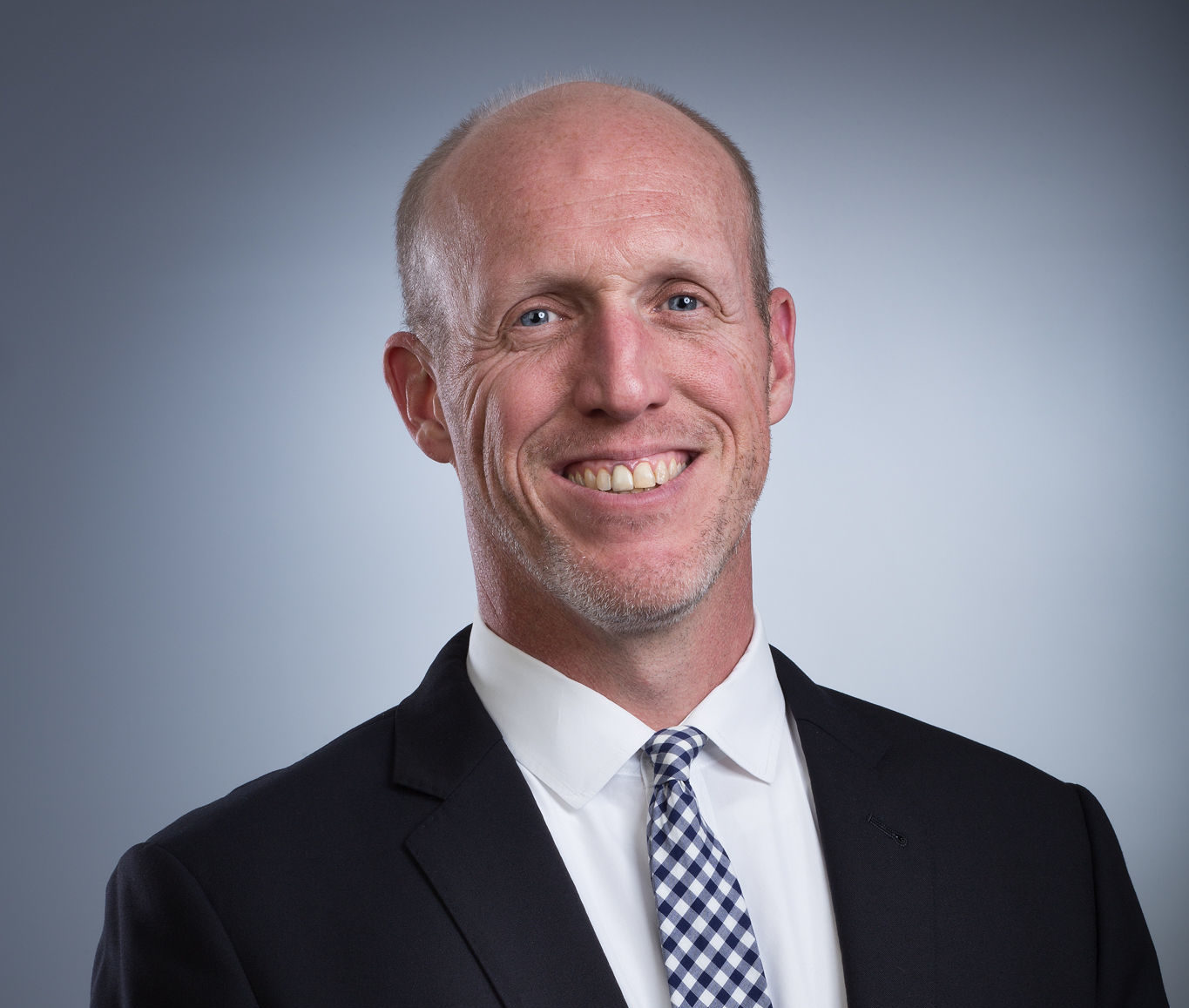Time Flies When You’re Building Wind Farms
A Q&A with Apex’s Chris Weatherford on Constructing Michigan’s Largest Wind Project
As a vice president within Apex’s Project Management team, Chris Weatherford is overseeing the company’s role in the construction of Isabella Wind and helps manage communications between Apex, the lead contractor, and the project owner. He sat down with Cat Strumlauf to talk all things construction.
What are the main challenges of constructing a wind project?
The weather and the logistics. It’s ironic—we build in incredibly windy places, but we need calm weather to build. In Michigan, we’ll deal with more extreme weather events: rain, snow, blizzards, ice, a tough winter.
Logistically, one unique aspect of Michigan is the road restrictions. We can’t haul heavy things when the ground is thawing in the spring because the asphalt is “squishy” and prone to damage. In the Great Lakes State, winter is long; we’ll likely need to wait until May 1 before turbine components can be delivered. And delivery means very large things going down skinny roads to their final location. It takes a huge amount of patience and planning so we can erect the turbines safely and on time.
What is the most exciting part of construction?
The start of construction—everyone is happy and eager to begin work. And then, the finish—commercial operations. The milestones in the middle are good, too, because the landowners and stakeholders are excited. Those days are helpful to remember when it’s raining cats and dogs or 110 degrees out. Or, in the case of Michigan, minus 10 degrees.

What is it like building in these communities?
Everyone is really positive and enthusiastic about the momentum leading up to commercial operations. This is often something unprecedented in rural towns and counties, so they want to keep track and stay in the know. Our favorites are the farmers who love to hang out at the job trailer and chat—usually, when harvest is done, they’ll come out and tell you how to build stuff, and I now know way more about cotton than before. The communities are small, always unique, and you run into the same people over and over, which builds a sense of comradery throughout construction.
How have you seen the wind construction industry change over the years?
Efficiencies have been found across the board. Foundations are better designed and faster to build. As the towers get bigger, though, that’s where it gets a little trickier. They are heavier, so you need special, taller cranes. At Isabella, we will need a very large crane to reach a 120-meter hub height, an entire tower section higher than we’ve previously constructed. All the projects up to now have been about an 89- or 90-meter hub height. We have to plan for and work around different wind speeds and the challenges related to that higher altitude.
What drew you to this job and this industry?
I’ve always liked to build things. Before Apex, I worked in sports facility construction and design. Now, I’m approaching five years as an Apexer. Time flies when you’re building wind farms.
One of the things I love about wind construction is the way we go about it. We have a daily plan and it’s relatively repetitive work, which means that you can forecast things and solve problems early. Even though the construction is repetitive—you’re building the same foundation, the same turbine, the same cable in the ground—the projects we work on are complex and no two are the same. You face different challenges and opportunities every time. And you’ve got to be ready for each and every one.

